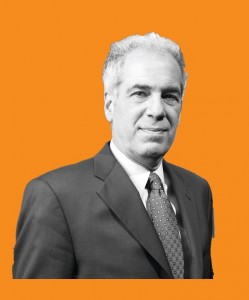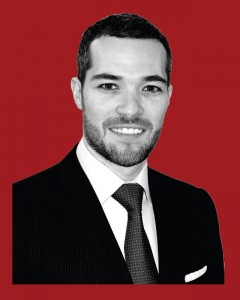From the September issue: In 2014, the leasing activity of TAMI (technology, advertising, media and information) tenants surpassed for the first time Manhattan’s traditionally dominant category — that of finance, insurance and real estate firms — 31.4 percent to 28.8 percent. For this month’s Q&A feature, we spoke to experts about the next wave of tech districts and the relationships between landlords and TAMI tenants. Our third and final web installment features interviews with Dennis Someck of Lee & Associates and Jamie Katcher of Cushman & Wakefield.

Dennis Someck
Dennis Someck
Executive managing director and principal, Lee & Associates
With the recent dip in leasing activity for TAMI tenants, do you think it’s becoming a tenant’s market?
I wouldn’t call it a tenant’s market, but tenants have the luxury of time. They don’t need to be as concerned that if they see a space on Monday morning that it will be gone by Tuesday, or that the price will go higher. Tenants can scour the market and negotiate better rents than they could three months or four months ago. We’re seeing some TAMI tenants shut down. When they’re out of business, the space goes back to the landlord, who puts it on the market and is even willing to offer it for a few dollars less [per square foot]. That means tenants have more opportunities without having to go through full construction. A year and a half ago, we were seeing a lot of old, recycled spaces that weren’t TAMI spaces.
If leasing demand from TAMI continues to weaken, which neighborhoods and projects will be hardest hit?
Brooklyn might get hit as prices in Manhattan start to come down. Brooklyn companies attract Brooklyn employees, while Manhattan companies get employees from Brooklyn, Queens, New Jersey, Manhattan. In Manhattan, unlike in Brooklyn, there’s a lot of properties that can be recycled for TAMI tenants at a lesser cost: office buildings, light manufacturing buildings, showrooms, that haven’t been fully updated with lobbies, elevators.
Where do you see the best leasing opportunities right now for start-ups? How has that changed from a year ago?
One of the best options for start-ups is still the Financial District, although prices have gone up. The most favorable opportunities are in the West 30s, in old garment buildings. Start-ups resisted that area, but now you’re seeing a flurry of TAMI tenants going between 35th and 39th and Fifth Avenue and Ninth Avenue — the Penn Plaza neighborhood. Landlords used to get $30 a foot there, and now they can get $40 or $45 a foot.
What are more mature TAMI tenants looking for?
Whereas start-ups are looking less at quality of building than the cachet of the area, mature tenants are looking at other factors. Elevators, for example. Some NoMad buildings, showroom or accessories buildings, light manufacturing buildings, have two elevators that used to serve 12 people on a floor. Now a TAMI tenant comes in and puts 40 people to 60 people on a floor. At lunchtime, you see a line of employees out the building waiting to get into the space because those two old elevators can’t support that amount of traffic. Same thing with the bathrooms. An attended lobby, or a landlord who is willing to put in more bathrooms with more stalls. You can’t add more elevators, but you can make them electronically timed and faster.
Outside of Manhattan and Brooklyn, are there any other markets that tech tenants are looking at? Like Queens or the Bronx?
Long Island City has potential, because it has much better transportation than Brooklyn and bigger floor plates. Parts of Brooklyn only have one subway line going through them, while Long Island City has 7, N, Q, R, E, M, the Long Island Rail Road. You can go from Grand Central to the heart of LIC in 7 minutes. And they are building 22,000 apartments there. But services are lacking. The tech world isn’t going to run there just yet.
How do landlords mitigate the risk of renting to start-ups that have little to no earnings history?
Some ask for eight to 12 months of security. Others will not do a deal with a company unless it’s revenue-producing and profitable. Years ago, during the first wave [dotcom bubble], landlords took shares of stock in the companies. After most of them collapsed, you don’t see that as much. They just want a tenant that will pay the rent.

Jamie Katcher
Jamie Katcher
Senior Director, Cushman & Wakefield
If leasing demand from TAMI continues to weaken, which neighborhoods and projects will be hardest hit?
We actually feel that reports of a TAMI slowdown have been exaggerated. TAMI tenants accounted for 33 percent of Manhattan leasing activity in the first half of the year, and over 53 percent of all Midtown South activity. On an aggregate level, the TAMI sector is on pace for nearly 6.8 million square feet, which would be the second most active leasing year since 2011.
New York City is currently in the midst of a commercial construction surge, with some 30 million square feet of space planned or under way. How much do you see being filled by the TAMI sector?
The types of TAMI tenants most likely to lease space in new developments are the more mature companies that already have a substantial New York City footprint and are looking to lease an additional 100,000 square feet, 200,000 square feet, even half a million square feet to keep up with their growth. Companies that have grown their NYC footprints over time and now cannot find the amount of space they need in the Midtown South market.
What types of TAMI tenants are out there in the market right now? How many — and which ones — are big enough to anchor a building?
We are currently tracking 7.4 million square feet of active requirements from 129 TAMI tenants. Of those tenants, 14 are looking for 100,000 square feet or more, making them large enough to anchor most NYC buildings. Technology and media companies are leading the way, accounting for 44 percent and 27 percent of all TAMI demand, respectively.
What are office landlords doing to lure those tenants?
It is becoming more and more common to see landlords offering bike rooms, signing retail leases to high-quality restaurants and maximizing outdoor space. These are all important, but for tech tenants specifically it is crucial that their space has the infrastructure necessary to do business. More landlords have begun to upgrade their internet and power capabilities. It’s not uncommon now to see landlords pre-building spaces to lure small and mid-sized tenants in hopes that they grow and stay within their building or portfolio. Covering the costs to build out a space is also extremely attractive.